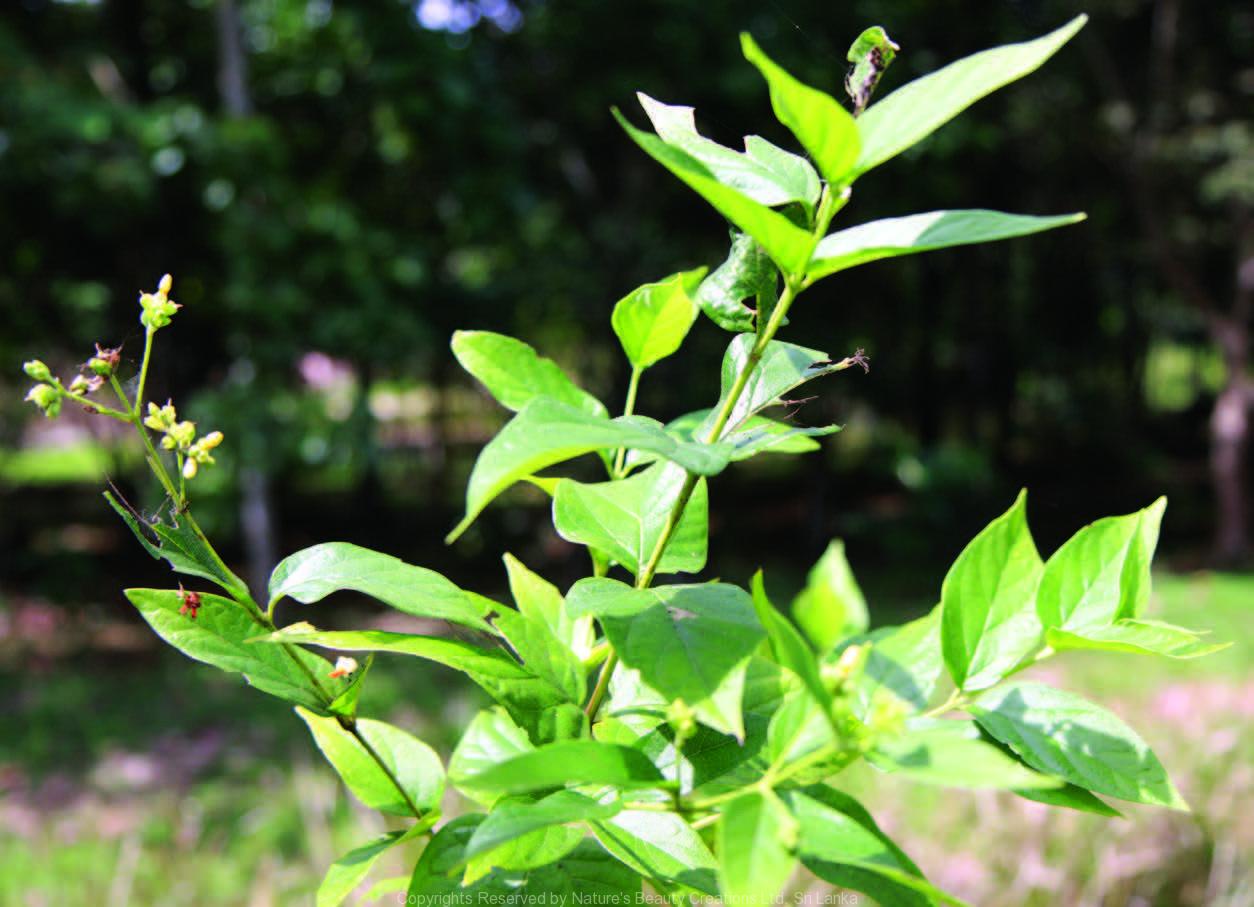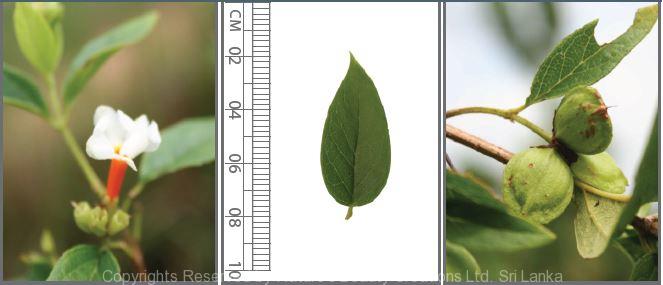

Traditional Knowledge
Useful plant parts :
Leaf
Uses in traditional medicine :
- Expressed juice of the leaves is given with bee honey for intestinal pains in children
- Used to treat fever, rheumatism, obstinate sciatica, malarial fever and internal worms
Scientific Research
Chemical constituents:
Iridoid glycosides: arbortristoside A–E, arborsides A–D from plant; aliphatic acids: hexadecanoic acid, octadecanoic acid and terpene alcohols: linalool, (E )-phytol, β-eudesmol from bark and leaf essential oils
Bioactivity :
Alcohol extract of seeds, flowers and leaves: immunostimulative, anti-inflammatory, hepatoprotective; ethanol extract of plant: antimalarial, antiamoebic activity; leaf extract: antinociceptive, antioxidative, antipyretic; chloroform and ethyl acetate extracts of flowers: antibacterial, cytotoxic; decoction of leaves: antihistaminic, purgative
Clinical:
References :
Anita, R. et al., (1990), Iridoid glucosides from Nyctanthes arbor-tristis, Phytochemistry, 29(6), 1917-1920.
Chitravanshi, V. C. et al., (1992), Therapeutic Action of Nyctanthes arbor-tristis against Caecal Amoebiasis of Rat, Pharmaceutical Biology, 30(1), 71-75.
Hukkeri, V. I. et al., (2006), Hepatoprotective activity of the leaves of Nyctanthes, Indian Journal of Pharmaceutical Science, 68(4), 542-543.
Khatune, N. A. et al., (2001), Antibacterial activity and cytotoxicity of Nyctanthesarbor-tristis flowers, Fitoterapia, 72(4), 412–414.
Kozhiparambil, K. et al., (1985), Arbortristoside A and B, two iridoid glucosides from Nyctanthes arbor-tristis, Phytochemistry, 24(4), 773–776.
Misra, P. et al., (1991), Antimalarial Activity of Traditional Plants against Erythrocytic Stages of Plasmodium berghei, Pharmaceutical Biology, 29(1), 19-23.
Puri, A. et al., (1994), Immunostimulant activity of Nyctanthes arbor-tristis L., Journal of Ethnopharmacology, 42, 31-37.
Satyal, P. et al., (2012), Chemical compositon and biological activities of essential oil from leaf and bark of Nycanthus arbor-tristis L. from Nepol, Open access journal of medicinal and aromatic plants, 3(1), 1-4.
Saxena, R. S. et al., (1984), Study of anti-inflammatory activity in the leaves of Nyctanthes arbor-tristb Linn. – An indian medicinal plant, Journal of Ethnopharmacology, 11, 319-330.
Saxena, R. S. et al., (1987), Analgesic, antipyretic and ulcerogenic activity of Nyctanthes arbor tristis leaf extract, Journal of Ethnopharma- cology, 19(2), 193-200.
Saxena, R. S. et al., (2002), Tranquilizing, antihistaminic and purgative activity of Nyctanthes arbor-tristis leaf extract, J Ethnopharmacol, 81(3), 321-5.
Singh, K. L. et al., (1995), Arborside d, a minor iridoid glucoside from Nyctanthes arbor-tristis, Journal of Natural Products, 58(10), 1562-1564.
Copyrights Reserved By
Natures Beauty Creations




